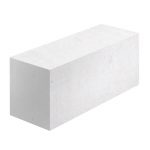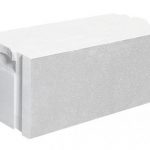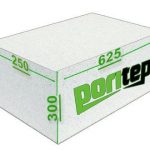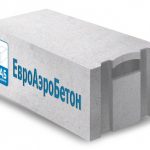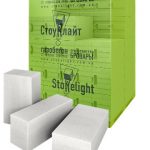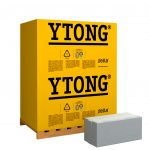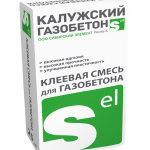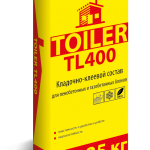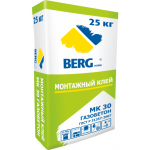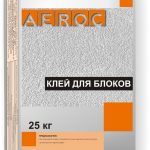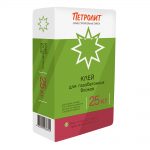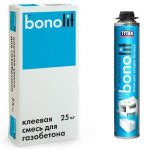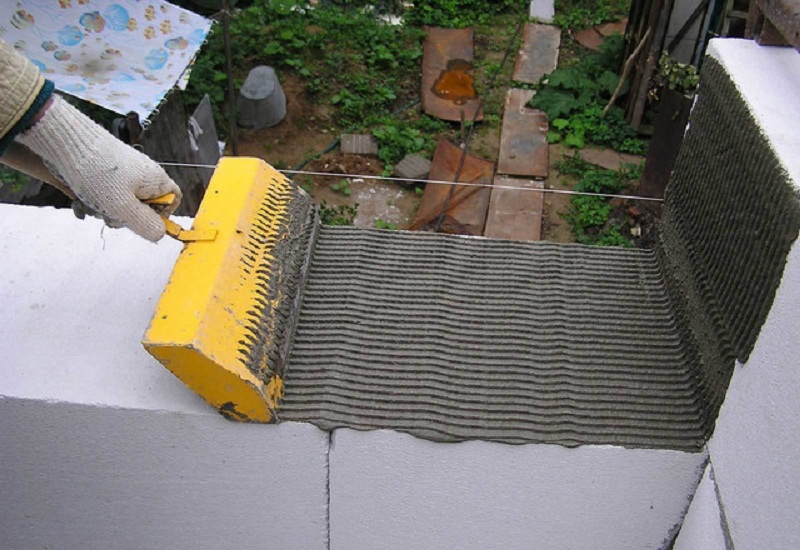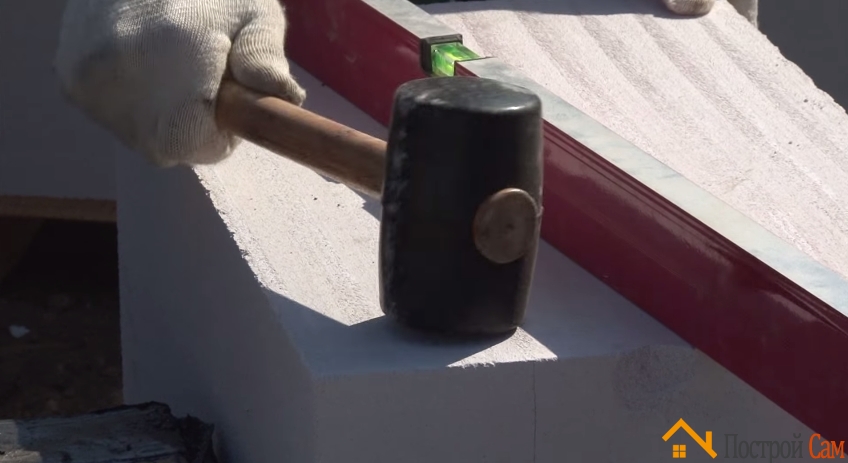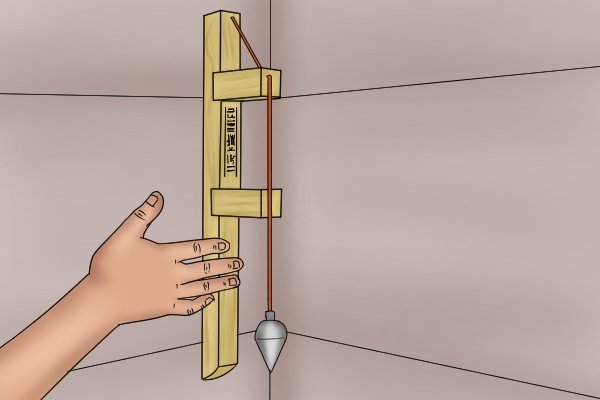Aerated concrete block D500 is a material for a wide range of applications. Its technical characteristics allow building buildings up to 5 floors high from it. Wide block products are suitable for the construction of load-bearing walls, narrow ones for internal partitions.
Scope of application and features of the material
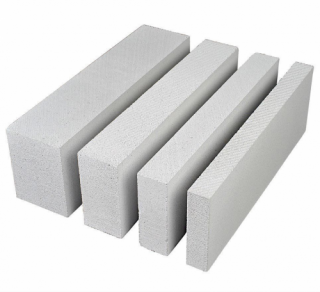
Aerated concrete D500 can be used for the construction of summer houses and for the construction of a permanent home. Since the mechanical strength of the product is influenced by its size, the scope of application depends on its thickness. Aerated concrete d500 in thin slabs 8-15 cm is used for laying out interior partitions, products by 20-25 cm - for the construction of a summer cottage... Blocks thicker than 30 cm are suitable for the construction of load-bearing walls of year-round housing.
Blocks are made from a sand-cement-lime mixture, which is diluted with water, and then a reagent containing aluminum is introduced. It is needed to trigger the formation of pores, a high percentage of which (up to 85%) characterizes this material. When the mixture is kept in a warm environment, it gains volume. After solidification, the mass is cut into blocks with clearly defined geometric parameters, which are then sent to an autoclave oven with high temperature (up to 200 degrees) and air humidity.
In addition to smooth blocks of a strictly rectangular shape, there are varieties that have a groove-comb bond (by analogy with the groove-thorn version of finishing panels). The presence of protrusions and recesses improves adhesion to adjacent elements. Some products also have builder handles for easy handling of the blocks.
Physical and technical characteristics
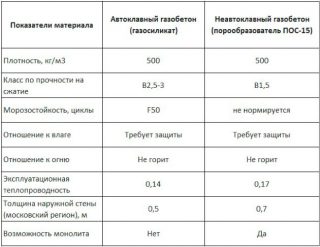
Width the block can vary in wide ranges - from 7.5 to 50 cm. The thicker the product, the more it is suitable for the masonry of load-bearing walls.
Length blocks is 0.5-0.6 m, the standard height is 0.2 m.
Density aerated concrete D500 can reach 500 kg / m³.
Thermal conductivity porous blocks is 0.13 W / m ° C.
Vapor permeability coefficient aerated concrete d500 - 0.21 mg / [m * h * Pa]. This indicator decreases as the number of material grades increases.
Block products can withstand up to hundreds of freeze and thaw cycles without loss of performance.
The material is very porous (the figure reaches 85%), belongs to the I / II class of fire resistance.
Weight a cube of aerated concrete D500 is equal to 500 kg.
Manufacturers
Aerated concrete blocks of the following manufacturers are presented on the Russian market:
- Kcella-Aeroblock-Center.
- EuroAeroBeton.
- Stonelight.
- Poritep.
- Bonolit.
- Aeroc.
The choice of adhesive for the installation of gas blocks
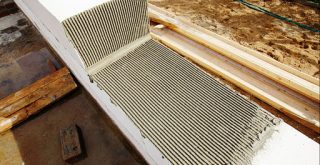
Due to the correct shape, light weight and large dimensions, the gas silicate block D500 is easy to install, buildings are built from it quite quickly. Adhesive products are used as a binder.
Sometimes you can find violations of the laying technology caused by the wrong choice of composition:
- Ceramic tile adhesive cannot be used for aerated concrete. This is due to a significant difference in water absorption - fired clay hardly absorbs moisture, blocks - on the contrary. Because of this, the material takes away the liquid part from the composition too quickly, as a result of which the glue line does not reach the required strength. In addition, this drying rate causes the formation of numerous cracks in the thickness of the seams.
- Not suitable for working with porous concrete cement-sand mortar, as thick seams contribute to the formation of "cold bridges" in the areas of joints. An exception can be made only when laying products of the 2nd category, which have an uneven surface with pronounced differences. In this case, the solution will fill the cavities formed due to the distorted geometry of the blocks.
To work with aerated concrete, a special glue is used, specially designed for this material and containing plasticizing additives that add elasticity and help retain moisture in the composition. It also includes fine sand. This set of ingredients makes it possible to create masonry with thin seams in 3 mm... Also on the market there are special adhesives for laying blocks in winter, with which you can work at negative temperatures - usually up to -15 ° С.
To prepare the mixture, the dry composition is diluted with water. This can be done using an electric drill with a mixing attachment. The proportions of powder and water are different for different products, therefore, when mixing, you must adhere to the manufacturer's recommendations on the package.

Features of laying aerated concrete blocks
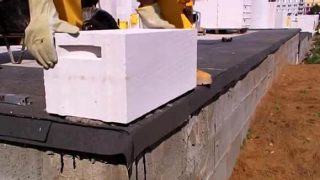
Before placing the concrete, check the evenness of the foundation. The difference between the lowest and highest points should not be more than 3 cm. 2 layers of sheet waterproofing are laid on the base, for example, roofing material or waterproofing impregnated with bitumen).
When carrying out work, the following rules are followed:
- So that all the walls are at the same height in height, the ropes are pulled between opposite corners.
- The glue is applied to the horizontal seam and to the joints with adjacent blocks. How many products to cover with glue at one time depends on the speed of work. Usually, it is applied for a maximum of 2-3 blocks at a time. It is not recommended to spread a large amount at once, since you may not have time to align the position of all elements in time before the mixture hardens. If necessary, the masonry can be quickly disassembled and laid out again.
- The composition is leveled with a rubber mallet. It is impossible to use metal tools when laying and positioning porous blocks - they easily damage their surface. Uneven areas can be sanded with a special float and then the dust can be removed with a brush.
- To control horizontal evenness, use the building level and rule. You need to check the masonry after each laid out row of blocks. In this case, the rule is placed on the surface of the concrete, and a level is set on top of it. To appreciate the straightness of the corners, a simple wood square will do.
- It is best to use a plumb line to control the masonry vertically.... Deviations from a straight line should not be more than 1.5 mm per 2 m masonry height. It is also possible to control verticals using a level and a rule.
- When the first row is laid you need to wait 3-4 hours for the mixture to set, and then continue to work.
As with the laying of brick rows, when working with porous concrete, it is organized dressing... The longitudinal seams in each subsequent row are displaced by at least 8 cm. The blocks that form the corners of the building and laid out near the openings must be long enough - at least 11.5 cm.

